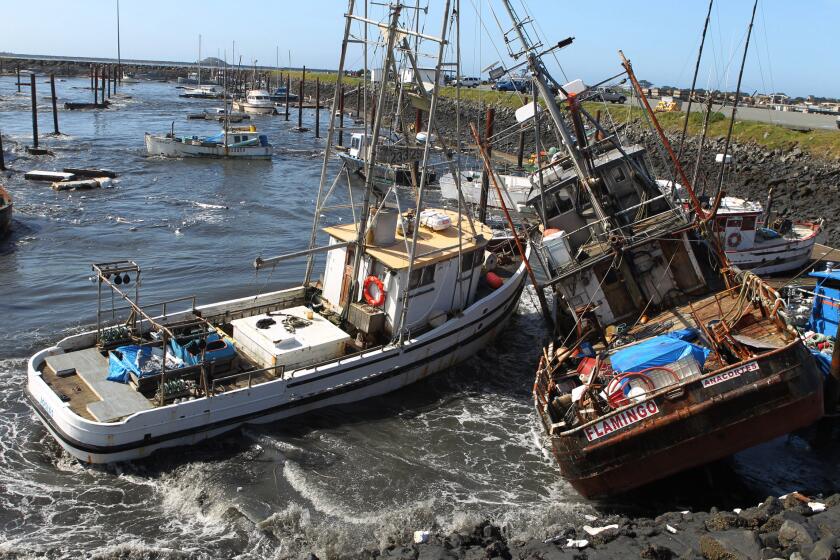Firm Tests Panels for High-Rise Buildings
- Share via
High-pressure water, high winds produced by the propeller of a World War II bomber engine, a torture device that simulates earthquakes, electrical cables connected to computers--these are among the tools used by Smith-Emery Co. to test the soundness of curtain walls for office buildings.
Perfected in the early 1950s, curtain walls are part of the structure but do not bear its loads; they hang from the structural frame of the building like a curtain. If the windows don’t open in an office building, the chances are the building has a curtain wall.
According to Smith-Emery project manager Wayne Barclay, an architect, the first major use of curtain walls was in Manhattan’s landmark Seagram Building, designed by Mies van der Rohe.
From that auspicious start in 1952, curtain walls have come to be the standard wall system for virtually all mid- and high-rise office buildings.
Required Tests
This means a great deal of work for Smith-Emery because the 84-year-old company is the leading firm in California that conducts tests on full-scale mock-ups of curtain walls--and tests are required by all building departments.
In the less than two years that Smith-Emery has had the 45-foot high by-70-foot-long curtain wall testing unit behind its Los Angeles headquarters at 781 E. Washington Blvd., its engineers and technicians have tested more than 40 mock-up curtain walls, Barclay said.
Four design problems and more than three dozen water leakage problems have turned up, pointing out the necessity for curtain wall testing, he said.
“Although curtain walls have been around for nearly 40 years, curtain wall engineering is very primitive,” he said. “Each wall design is customized for the particular building, so the knowledge gained might or might not be applicable to other structures.
Unitized Wall Systems
“It is also important to determine the caliber of field workmanship in order to assign liability if a leak or some other problem occurs on the final building installation.”
In the last 10 years or so, unitized curtain wall systems have become available and are widely used. They are the curtain wall equivalent of factory-built housing, with the earlier type the equivalent of site-built housing, Barclay said.
“Regardless of the type, testing is necessary to see if the windows leak, if the glass is strong enough to withstand high winds, if the seismic structural loading is adequate for the curtain wall to hold up under the stresses of an earthquake,” Barclay said.
Due to its expertise, Smith-Emery is prominent among the independent test labs that have been deputized by the Los Angeles Department of Building and Safety to inspect projects under construction; Smith-Emery has more than 200 full-time registered deputy inspectors.
Field Inspections
The firm also does a great deal of field inspections of existing curtain walls, especially since the Oct. 1, 1987 earthquake, Barclay said.
Fastened to the test unit while he talked to a reporter was the granite and glass curtain wall mock-up of 505 Montgomery Street, a building in San Francisco’s financial district designed by Skidmore, Owings & Merrill’s (SOM) San Francisco office.
“SOM is particularly demanding on curtain wall tests, so we’re proud to be able to get their work,” according to James E. Partridge, Smith-Emery’s senior vice president and chief engineer.
In addition to curtain walls, the company tests concrete, steel, aluminum and other construction materials and has an elaborately equipped chemical laboratory to test--among other substances and objects--hazardous waste, drinking and ground water, underground tanks and asbestos, Partridge added.
In addition to the Los Angeles office, Smith-Emery has an Anaheim branch and a San Francisco office.
More to Read
Sign up for Essential California
The most important California stories and recommendations in your inbox every morning.
You may occasionally receive promotional content from the Los Angeles Times.











